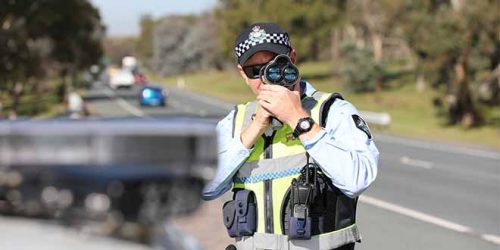A PIONEERING Canberra-based agricultural scientist says a key factor in solving a lot of tricky environmental problems has been overlooked for too long, even though it’s right under our feet.
We’re talking about soil, and according to Australian Soil Management chief executive Dr Greg Bender, it has a starring role to play in local efforts to improve Lake Burley Griffin’s water quality, national policies on land contaminated by petrol, and the international effort to address climate change as well.
“The treatment is carbon, so what we’re trying to do is increase the carbon content of the soil,” explains Bender, gesturing to the ground at Garran Oval, where ASM is experimenting and refining the techniques.
Living things are mostly made of carbon and Bender explains that organic carbon, like mulch or manure, is what “turns dirt into soil” by soaking up water, trapping nutrients and giving it the right structure for plants to grow in.
Petrol is also mostly organic carbon, so where it has leaked from underground tanks and contaminated empty blocks around Canberra, it could be converted back into something good for the soil, but instead it’s allowed to evaporate under the current guidelines for Australia and NZ.
“I guess most people never stop to think that the oil or petrol is organic carbon, so if you leave it on site and then use bacteria and normal soil organisms to break it down, you can break it down to below the [legal] threshold level, and then you can use that soil for something else,” Bender says.
“You may not want to grow food in it, but you can certainly grow things like turf, plants or trees for gardens.”
His colleague, ASM director Norman Marshall, says: “If the Government is serious about its environmental policy, instead of releasing more carbon back into the atmosphere, we should be holding it; that’s the change in Government thinking that is needed.”
From 2001 to 2006, Dr Bender ran a $10 million national research initiative for the Grains Research and Development Corporation, which looked to increasing soil carbon as a sustainable alternative to chemical fertilisers.
“Now, at the end of all that, we’d learnt lots of good things,” he says. “We’d learnt that carbon really is the answer… so we set up this business to deliver that knowledge, because it’s in the public domain but no-one’s doing it.”
He says data collected in the 1800s shows Australian soils were fine when Europeans first started farming here, but years of farming have depleted them and it’s time to turn back the clock.
Bender is also confident that ASM’s techniques to increase soil carbon levels can help with long-standing water quality issues such as blue-green algae blooms in Lake Burley Griffin, caused by excessive nutrients getting into the lake from surrounding areas.
“… The only way to [improve it] is to add organic matter, to get the soil structure back again so that all the nutrients drain down, not off,” he says, estimating that such efforts would have more effect than September’s addition of 4000 new aquatic plants to the lake’s edge.
Marshall says these are just a few public policy applications of the research behind the fledgling company, whose clients are more typically farms or golf courses.
“We’re very much in the startup stage so we’re concentrating on our home territory, which is the ACT and surrounding NSW, but the application is certainly universal… Even if we believe in it, we’ve still got to demonstrate to people that it works and that it’s cost effective.”
As for climate change, keeping carbon in the soil literally means it’s not in the atmosphere.
Marshall says that one percent more carbon in the soil, across only two per cent of Australia’s land mass, would effectively take 15 times our annual net emissions out of the atmosphere.
It also lets it hold 144,000 litres more water in every hectare.
“Trees are all sucking in carbon dioxide at a great rate,” says Dr Bender. “It gets turned into biomass and doesn’t come back again until you chop the tree down or burn it, but the roots – and this is the thing most people don’t know – plants put, say, 20 per cent of the carbon they absorb back into the soil; they actually pump it out of their roots.”
He says the plants put the carbon into the soil to feed the microbes, which help the plants by dissolving nutrients for their roots to slurp up.
“All these scientific things are known and published; our business is trying to get that knowledge into practical results. It’s no good sitting in a book, or that’s our view, anyway.”
Who can be trusted?
In a world of spin and confusion, there’s never been a more important time to support independent journalism in Canberra.
If you trust our work online and want to enforce the power of independent voices, I invite you to make a small contribution.
Every dollar of support is invested back into our journalism to help keep citynews.com.au strong and free.
Thank you,
Ian Meikle, editor




Leave a Reply